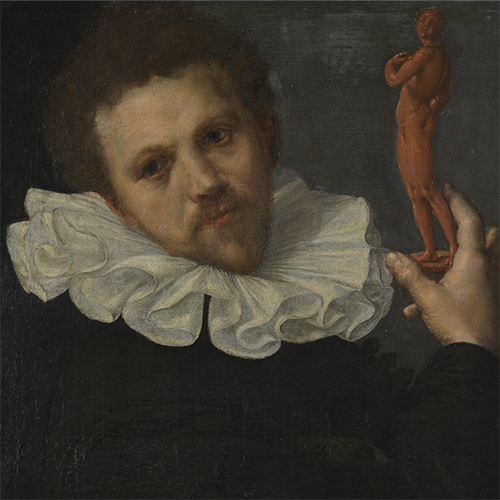Ketel and De Keyser
DOI:
https://doi.org/10.52476/trb.11392Abstract
In 1858 the Rijksmuseum acquired a modest portrait of a man (inv. no. SK-A-244) that has since then been attributed on good grounds to the colourful Amsterdam painter Cornelis Ketel (1548-1616). Until now it has been regarded as a likeness of the goldsmith Paulus van Vianen, an identification for which there is no plausible evidence.
The author suggests that the man should be identified as the Amsterdam city sculptor Hendrick de Keyser. Arguments in favour of this, aside from the convincing similarities between the man’s features and a portrait engraving of De Keyser, are the close friendship between Ketel and the sculptor, and the typical sculptor’s attribute – a statuette – that the man holds in his hand. This figurine – probably a model in reddish-brown wax – bears a strong resemblance to a statue of Eurydice that Hendrick de Keyser made for a fountain in Het Oude Doolhof, a pleasure ground in Amsterdam.
According to Karel van Mander, in the biography of Ketel in his 1604 Schilder-Boeck, Ketel made De Keyser’s portrait twice. He painted one portrait with his fingers, the other with a brush, which was described as ‘the head of the must artistic sculptor Hendrick de Keyser ... a very good likeness’. It is safe to assume that the latter work is the portrait in the Rijksmuseum.
Downloads







